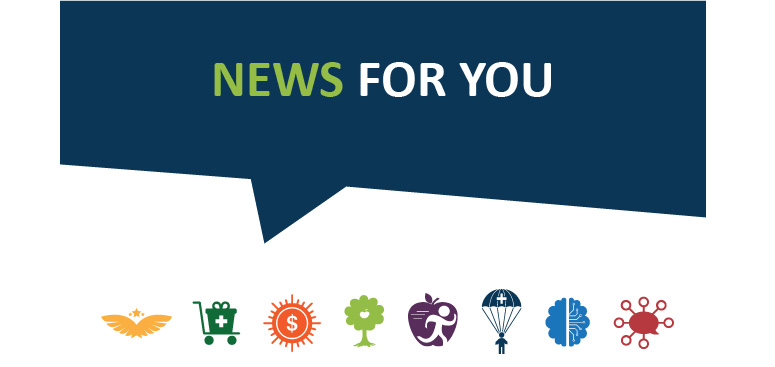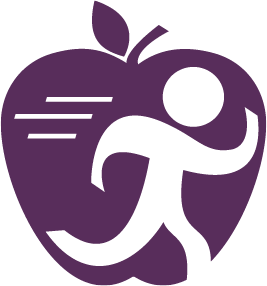
by admin | Jul 16, 2025 | Blog
Online scams and account takeovers are on the rise, targeting everything from bank accounts to employee benefits. While platforms like Alegeus offer built-in protections, the best defense starts with awareness. Here’s how both employers and employees can stay secure:
Keep Contact Info Updated
Make sure your phone number and email are current. These are used for multifactor authentication and alerts—outdated info can put your account at risk.
Know Who to Call
If something seems off, contact your benefits provider using the number on your card or their official website. Never trust contact info from suspicious messages.
Spot Scam Red Flags
Be cautious if someone asks for payment via gift cards, crypto, or wire transfers—these are common scam tactics.
Be Careful on Social Media
Avoid sharing personal details that scammers could use to guess security answers or craft convincing messages.
Follow Cybersecurity Best Practices
- Use strong, unique passwords
- Enable multifactor authentication
- Avoid clicking unknown links
- Turn on anti-phishing tools in your browser
Recognize Phishing and Social Engineering
Scammers may impersonate support staff and ask for your OTP or password. Never share these. Legitimate companies will never ask for them.
Fraud prevention is a team effort. Employers should educate their teams, and employees should stay alert. Together, we can reduce risk and keep accounts safe.

by admin | Jul 3, 2025 | Blog
When employees or their dependents lose group health coverage due to a qualifying event, COBRA ensures they can continue their health benefits. But what happens when a qualified beneficiary under COBRA relocates outside the service area of their HMO (Health Maintenance Organization) plan?
This scenario is more common than you might think—and it’s essential for employers and HR professionals to understand their obligations under COBRA in such cases.
COBRA Basics: Same Coverage Rule
Generally, COBRA requires employers to offer the same health coverage the qualified beneficiary had before the qualifying event. However, there’s a key exception for region-specific plans like HMOs.
The HMO Relocation Exception
If a qualified beneficiary moves out of their HMO’s service area, the employer must offer alternative coverage—but only if certain conditions are met.
✅ When Must Alternative Coverage Be Offered?
- Upon Request: The employer must offer other coverage options within a reasonable time after the qualified beneficiary requests it.
- Timing: The new coverage must begin no later than the date of relocation or the first day of the following month after the request.
✅ What Coverage Must Be Offered?
- If the employer offers other plans (e.g., PPO or indemnity plans) to similarly situated active employees that can be extended to the new location without extraordinary cost, those plans must be offered.
- If no such plan exists for similarly situated employees, the employer must offer any available plan that can be extended to the new location.
❌ What If No Coverage Is Available in the New Area?
- If no plan can be extended to the new location without extraordinary cost, the employer is not required to offer alternative coverage.
- However, if another controlled group member (e.g., a parent or subsidiary company) offers coverage in that area, it may be obligated to provide COBRA coverage.
Extraordinary Costs Are Not Required
Employers are not required to:
- Establish new provider networks.
- Create new reimbursement schedules.
- Offer preferred provider rates in areas without existing employee presence.
If a COBRA participant moves out of their HMO’s service area, you must be prepared to offer alternative coverage options—but only if they are already available to active employees and can be extended without significant cost.
Source: Thomson Reuters

by admin | May 29, 2025 | Blog
As healthcare costs continue to rise, many large employers are reevaluating their group health plan offerings. A common cost-saving strategy is to exclude spousal coverage. But does this decision expose employers to penalties under the Affordable Care Act (ACA)? Let’s break down what the 2025 ACA employer shared responsibility rules say about spousal coverage, and how FSAs, HRAs, and HSAs fit into the compliance picture.
ACA Employer Shared Responsibility: The Basics
Under the ACA, Applicable Large Employers (ALEs)—those with 50 or more full-time employees—must offer minimum essential coverage to at least 95% of their full-time employees and their dependents to avoid penalties
- Dependents are defined as biological and adopted children under age 26.
- Spouses are not considered dependents under ACA rules, so employers are not required to offer coverage to spouses to avoid penalties.
Spousal Coverage and ACA Penalties
If an employer excludes spouses from its health plan:
- No penalty applies, even if the spouse obtains subsidized coverage through the Exchange.
- Penalties are only triggered if a full-time employee receives a premium tax credit due to the employer failing to offer affordable, minimum-value coverage.
2025 ACA Penalty Amounts
- 4980H(a) Penalty: $2,900 per full-time employee (minus the first 30), if coverage is not offered to 95% of full-time employees and their dependents.
- 4980H(b) Penalty: $4,350 per full-time employee who receives subsidized Exchange coverage because the offered coverage was unaffordable or did not meet minimum value.
How FSAs, HRAs, and HSAs Impact ACA Compliance
While FSAs (Flexible Spending Accounts), HRAs (Health Reimbursement Arrangements), and HSAs (Health Savings Accounts) are not substitutes for minimum essential coverage, they can play a supporting role in ACA compliance:
1. FSAs (Flexible Spending Accounts)
- FSAs are employee-funded accounts used for out-of-pocket medical expenses.
- They do not count as minimum essential coverage but can help reduce employees’ healthcare costs.
- Employers offering limited-purpose FSAs alongside HDHPs (High Deductible Health Plans) must ensure the HDHP meets ACA affordability and minimum value standards.
2. HRAs (Health Reimbursement Arrangements)
- ICHRA (Individual Coverage HRA) can be used by employers to reimburse employees for individual market premiums.
- If structured properly, an ICHRA can satisfy ACA employer mandate requirements, provided the reimbursement amount is sufficient to make individual coverage affordable.
3. HSAs (Health Savings Accounts)
- HSAs are paired with HDHPs and are employee-owned.
- While HSAs themselves don’t satisfy ACA requirements, the HDHP must meet minimum value and affordability standards.
- Employer contributions to HSAs can help reduce the net cost of coverage, improving affordability calculations.
Excluding spouses from your group health plan does not violate ACA rules and will not result in employer shared responsibility penalties, even if those spouses seek subsidized coverage elsewhere. However, employers must ensure that full-time employees and their dependent children are offered affordable, minimum-value coverage.
FSAs, HRAs, and HSAs can enhance your benefits strategy and support ACA compliance, but they must be used in conjunction with a compliant health plan—not as a replacement.
Source: Thomson Reuters

by admin | May 22, 2025 | Blog
As employers prepare to offer health flexible spending accounts (FSAs), a common question arises: Are health FSAs administered by third-party administrators (TPAs) subject to HIPAA’s privacy and security rules? The short answer is yes—and here’s why that matters.
Understanding HIPAA’s Scope for Health FSAs
Under HIPAA, a health FSA is considered a group health plan, which makes it a covered entity subject to HIPAA’s privacy and security rules. The only exception is for self-administered FSAs with fewer than 50 participants—a rare scenario for most employers.
If your company uses a TPA to manage FSA claims, this exception does not apply. That means your health FSA must comply with HIPAA’s full privacy and security requirements.
Why Fully Insured Plans Are Different
Employers with fully insured major medical plans often take a “hands-off” approach to protected health information (PHI), receiving only summary or enrollment data. This limits their HIPAA obligations because the insurer, not the employer, handles PHI.
However, most health FSAs are self-insured, and the “hands-off” exception doesn’t apply. Even if a TPA handles the day-to-day administration, your company is still responsible for HIPAA compliance.
What Employers Must Do
To comply with HIPAA when offering a TPA-administered health FSA, employers should:
- Enter into a Business Associate Agreement (BAA) with the TPA, outlining how PHI will be handled.
- Implement privacy and security policies for the health FSA.
- Limit internal access to PHI to only those who need it for plan administration.
- Train staff who may come into contact with PHI.
- Ensure electronic PHI (ePHI) is protected under HIPAA’s security rule.
Minimizing Risk and Burden
While you can’t avoid HIPAA obligations entirely, you can minimize your exposure by delegating as much as possible to the TPA. This reduces the amount of PHI your company accesses and simplifies compliance.
If your company is offering a health FSA administered by a TPA, you are subject to HIPAA’s privacy and security rules. Taking proactive steps to comply—especially by working closely with your TPA—will help protect employee data and reduce legal risk.
Source: Thomson Reuters

by admin | May 16, 2025 | Blog
If your business hires extra help during the holidays, you might wonder if you’re required to offer health insurance. That depends on whether you’re an Applicable Large Employer (ALE) under the Affordable Care Act (ACA).
What’s an ALE?
You’re an ALE if you had 50 or more full-time employees (or equivalents) on average last year. If you are, you must offer affordable health insurance to at least 95% of your full-time employees and their children—or you could face penalties.
How to Count Employees
- Count full-time employees (30+ hours/week).
- Add part-time hours together and divide by 120 to get full-time equivalents (FTEs).
- Average the total number of full-time + FTEs for each month of the year.
Seasonal Worker Exception
You’re not an ALE if:
- You go over 50 employees for 120 days or fewer, and
- The extra workers are seasonal (like holiday retail staff).
So, if you usually have 40 employees and hire 80 more just for November and December, you likely don’t have to offer health insurance—as long as those extra workers are seasonal.
Quick Tip
“Seasonal worker” helps decide if you’re an ALE. “Seasonal employee” matters only if you’re already an ALE and need to track who’s full-time.
Bottom line: If your workforce only grows during the holidays, you may not be required to offer health benefits. But if you’re an ALE, you must offer coverage—or face penalties.
Source: Thomson Reuters





